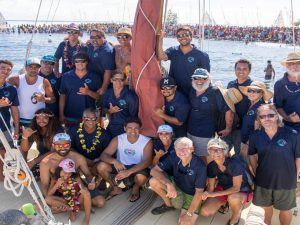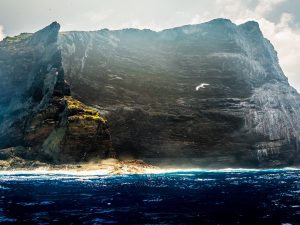
As Hōkūleʻa and Hikianalia sail into the future of voyaging, exciting findings around the world contribute and retrace past voyages of our Polynesian ancestors, confirming our pilina, or relations throughout the Pacific. In Anaweka, on the Northwest part of the South Island of Aotearoa, New Zealand, the discovery of a carved section of a waka has done just that.
“It’s very unusual because the structural, construction of it is different to the waka that were first sighted when Europeans arrived in New Zealand. So we’ve made a 3D model of what we think the canoe would look like, and this is just one plank that fits into this sophisticated, powerful craft. From doing that, we think at a minimum, it was 14 meters long, so it was capable of ocean going blue water sailing,” said Dylis Johns, Senior Research Fellow at the Conservation and Archaeology School at the University of Auckland.
This carved section was immersed underwater, and slowly degrading over time. Fortunately, with wet organic conservation, a controlled scientific process that is used to preserve the wood, Dylis and other scientists are able to conduct detailed analysis and future study into waka history. The interest that began in 2011, when this section was first found, continues to today.
“One of the striking features of this particular piece is that it has a turtle carved on the side of the strike, and even though turtle were known in New Zealand waters, we think that that might have something to do with its ancestral connection. So it looks as if it’s an overlay of another culture on a different environment, on a different resource. For 200 years, people have debated what the waka looked like that arrived in New Zealand, and now we have a pre-Euopean, a pre-contact canoe that has been directly dated,” said Dylis.
“This is wonderful because this is now going to herald a new chapter in understanding maritime technology long before Europeans arrived in New Zealand. And we are hoping it will give us a window into the past to understand Polynesian maritime technology, not just New Zealand,” said Dylis.




